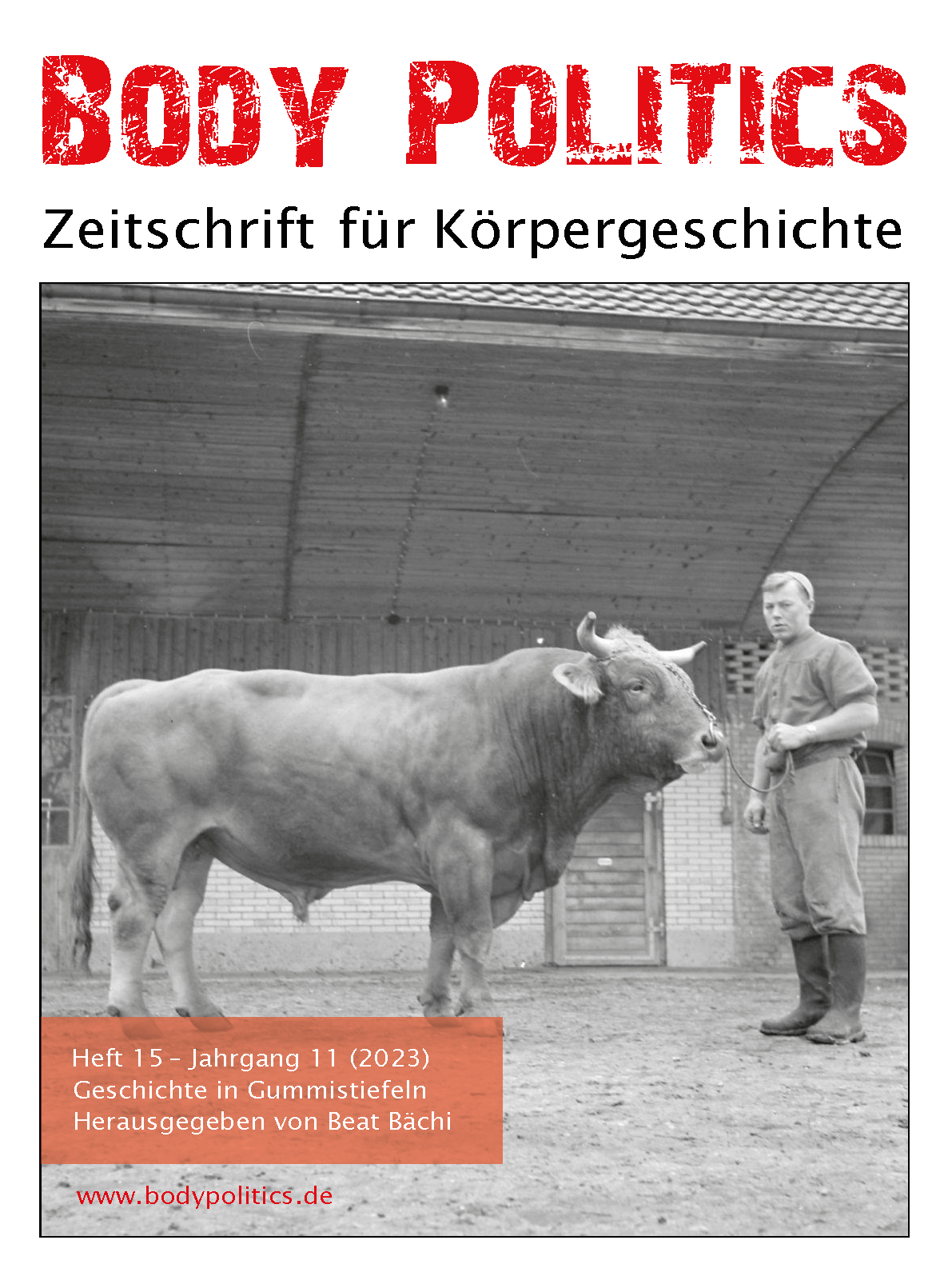Bodies Made Agriculture
How Animals Shaped Intensive Livestock Farming
DOI:
https://doi.org/10.12685/bp.v11i15.1555Abstract
English abstract: During the emergence and spread of intensive animal agriculture in the second half of the twentieth century, agricultural politicians, farmers, animal breeders, behavioral biologists, and veterinarians successfully worked on animals whose bodies produced more and more milk, meat, and eggs in less and less time. This paper examines the role of animal bodies as a force for this industrialization in the liberal democracy of West Germany and the socialist GDR. Behavioral patterns of cattle, pigs, and chickens that correlated with farm management and return on investment influenced the design of barns, practices of animal handling, and agrarian knowledge production – in both German states. In the democratized media society of West Germany, mediated animal bodies in films, newspaper articles, and in court cases additionally linked husbandry to the longstanding modern animal welfare discourse since the 1970s, thereby altering consumer values. The paper argues for a body-history approach to decipher the mutual entanglement of human-animal coexistence, even in settings where humans unquestionably subordinated animals under their interests.
Downloads
Veröffentlicht
Ausgabe
Rubrik
Lizenz

Dieses Werk steht unter einer Creative Commons Namensnennung - Nicht-kommerziell - Keine Bearbeitung 3.0 International -Lizenz.


